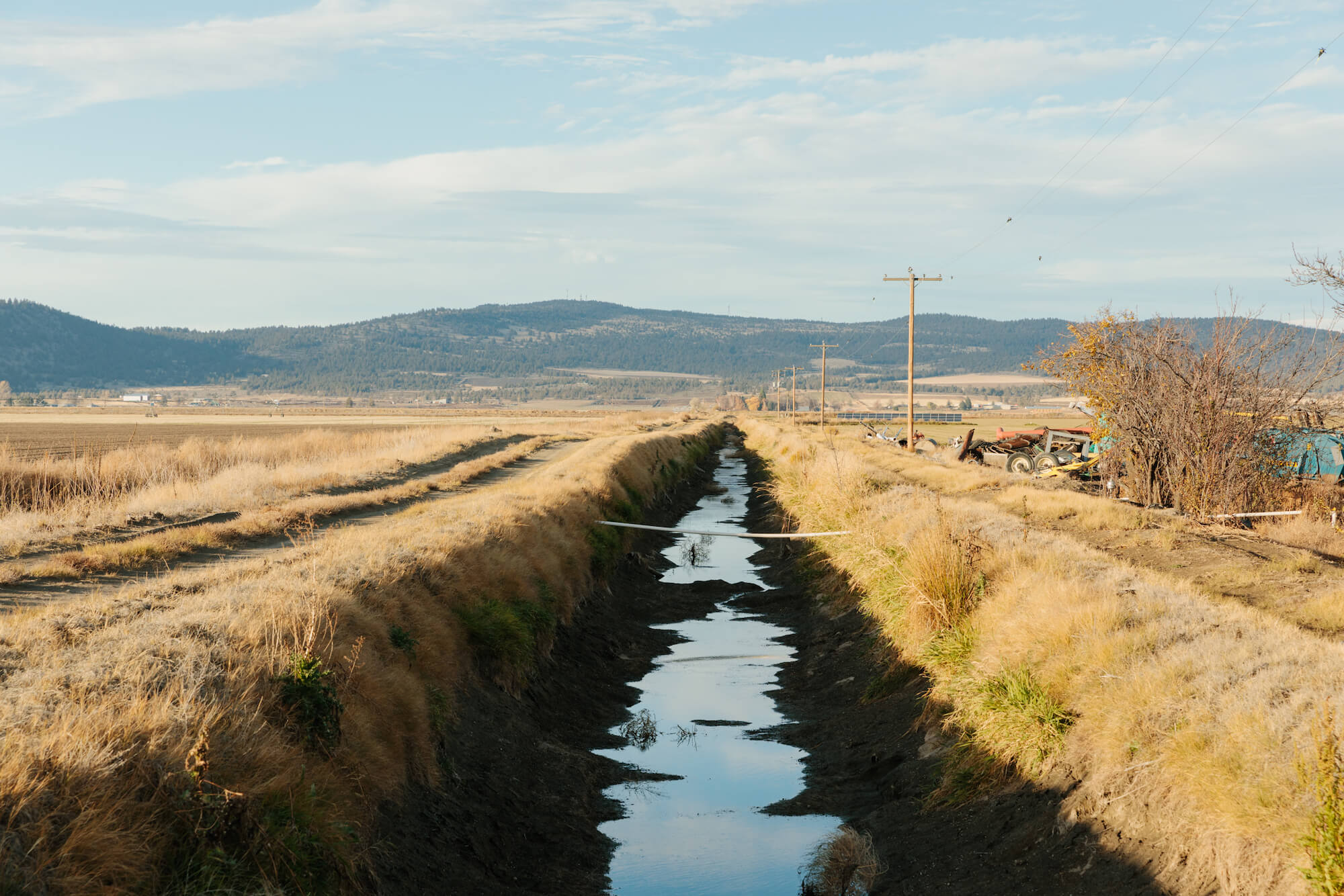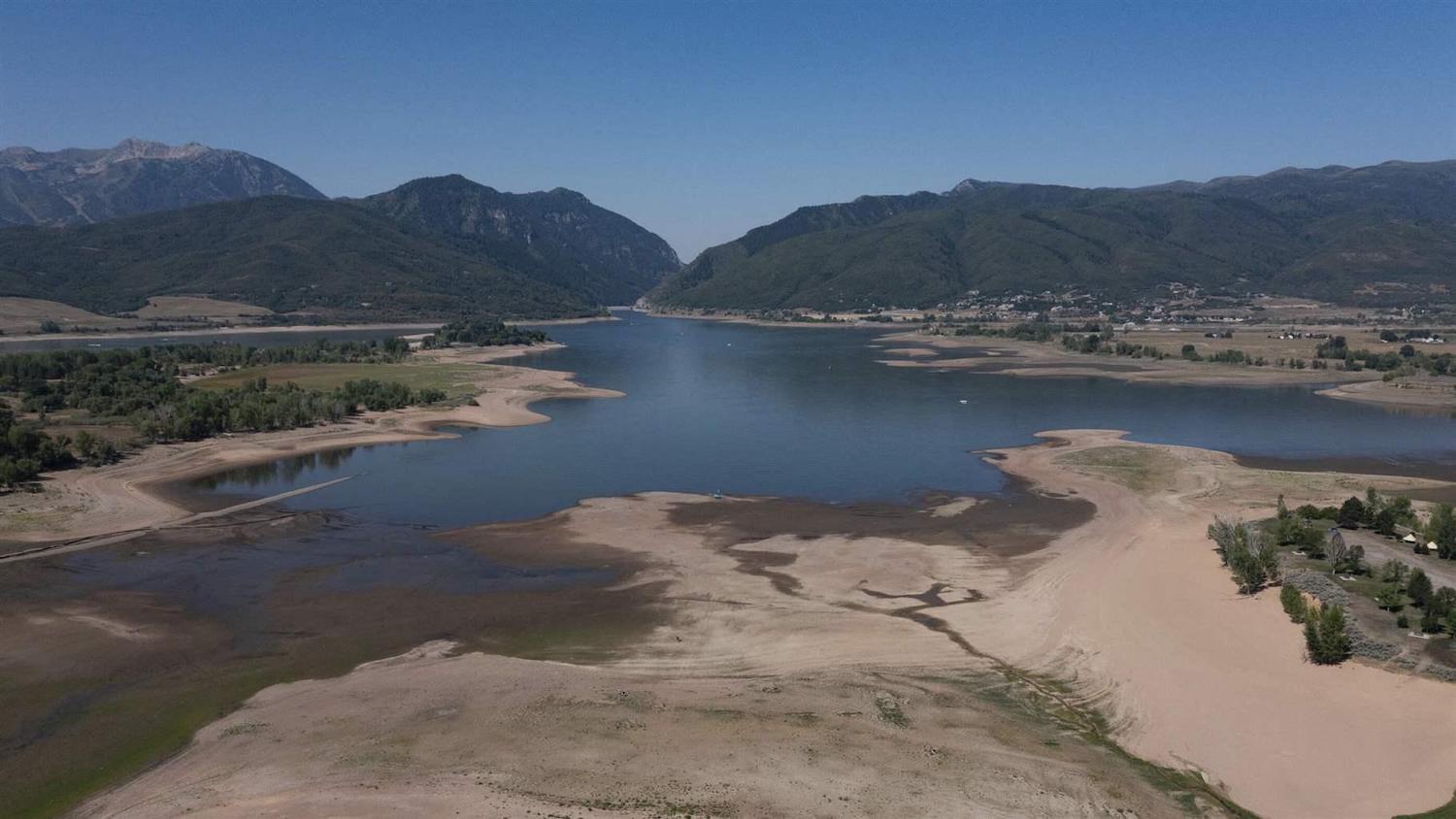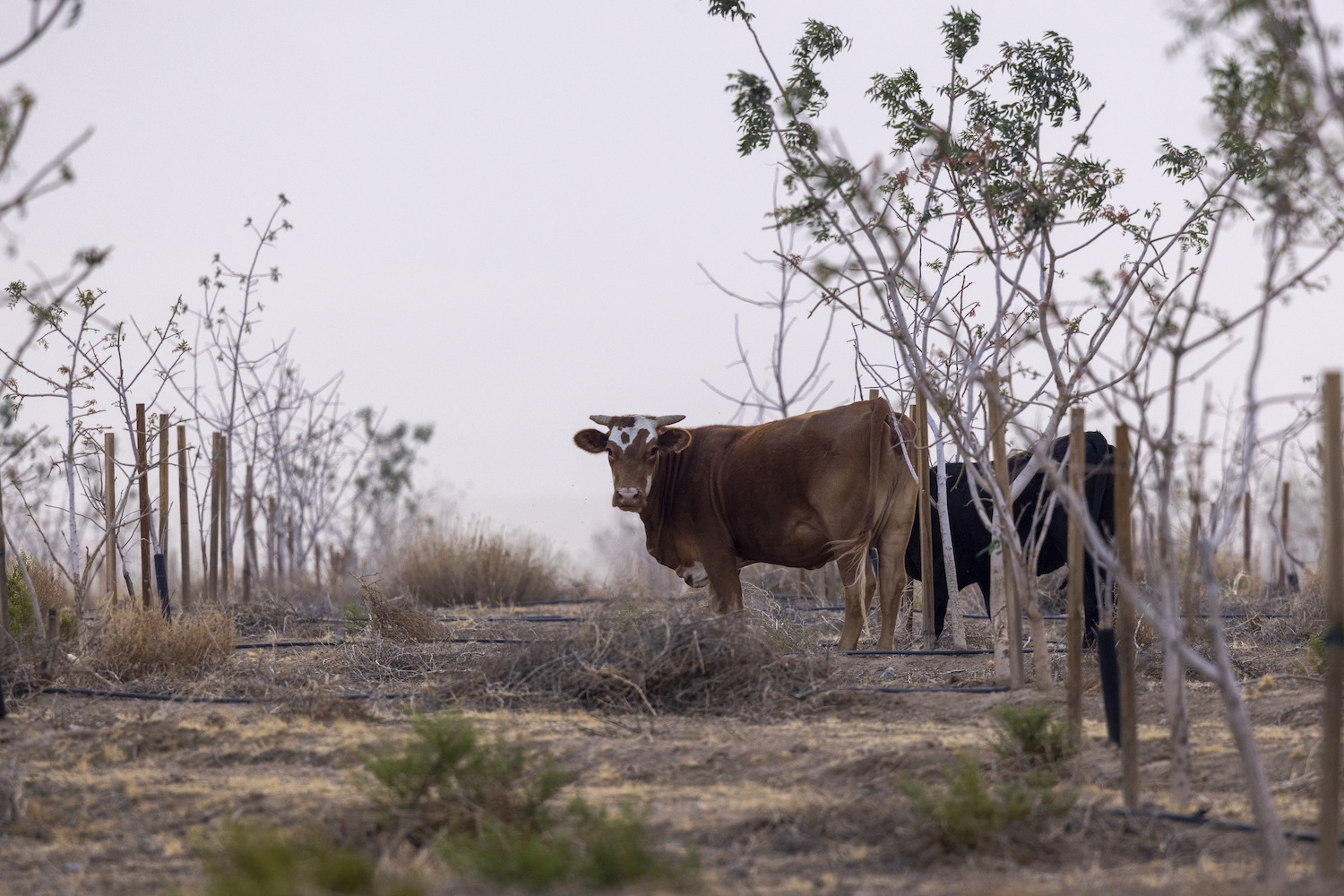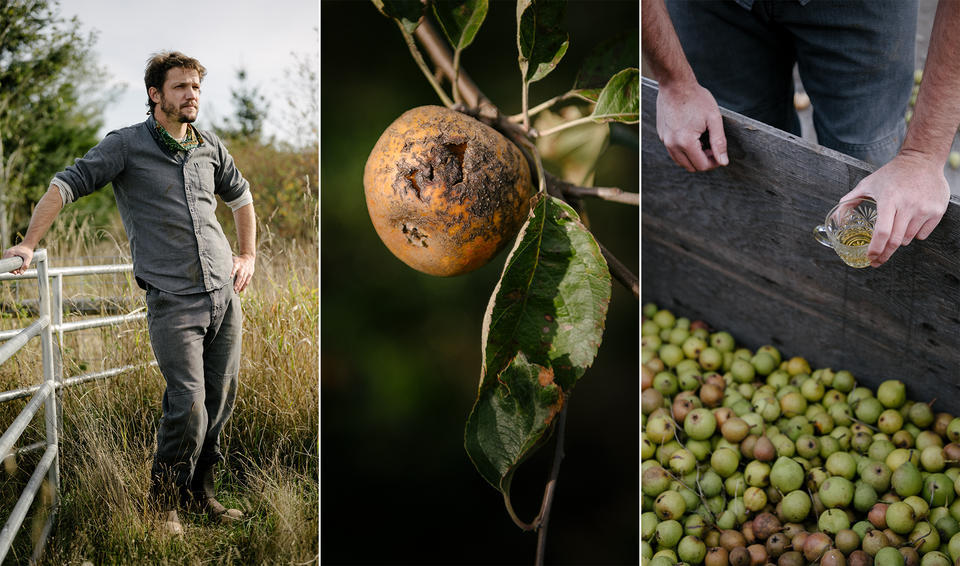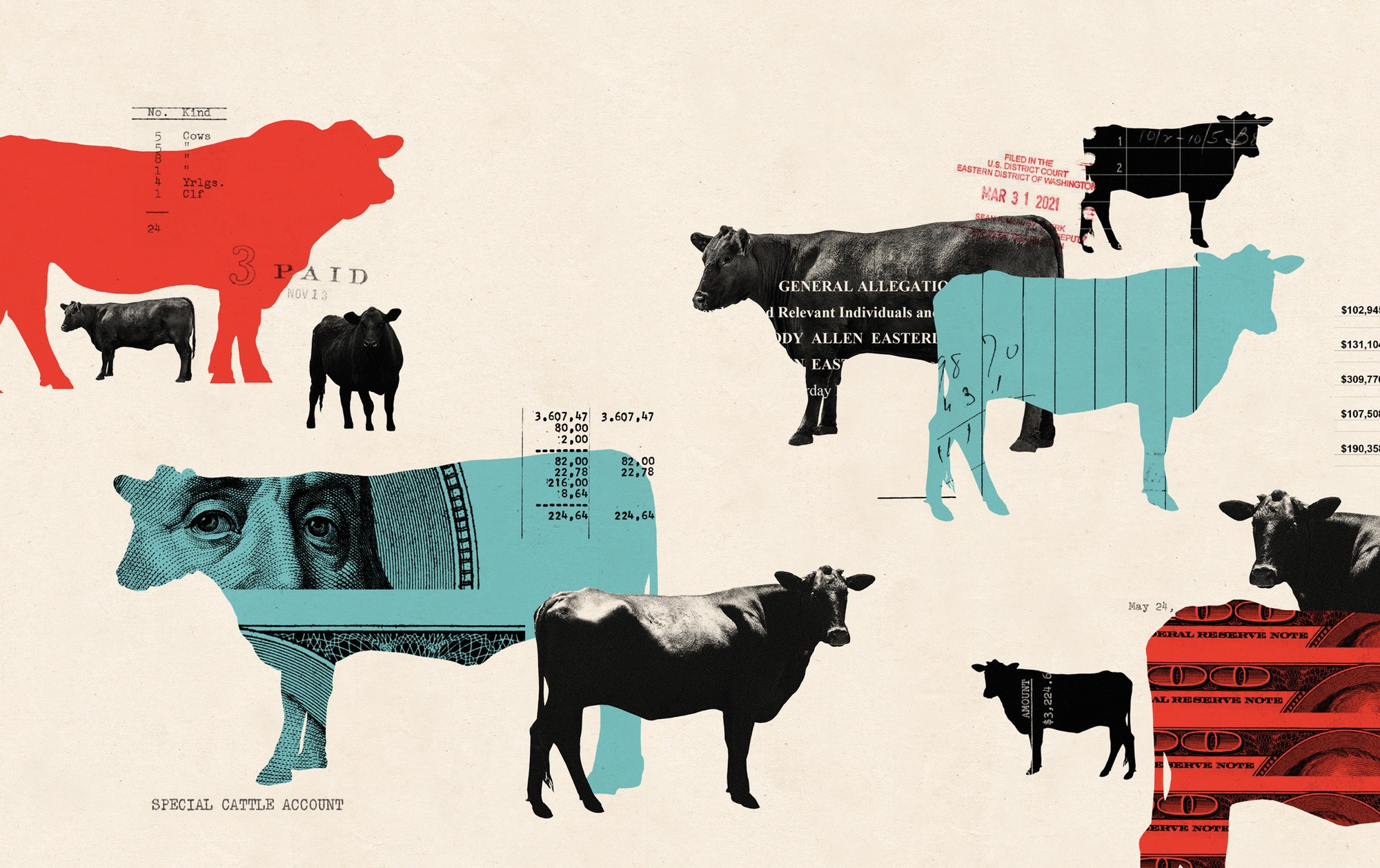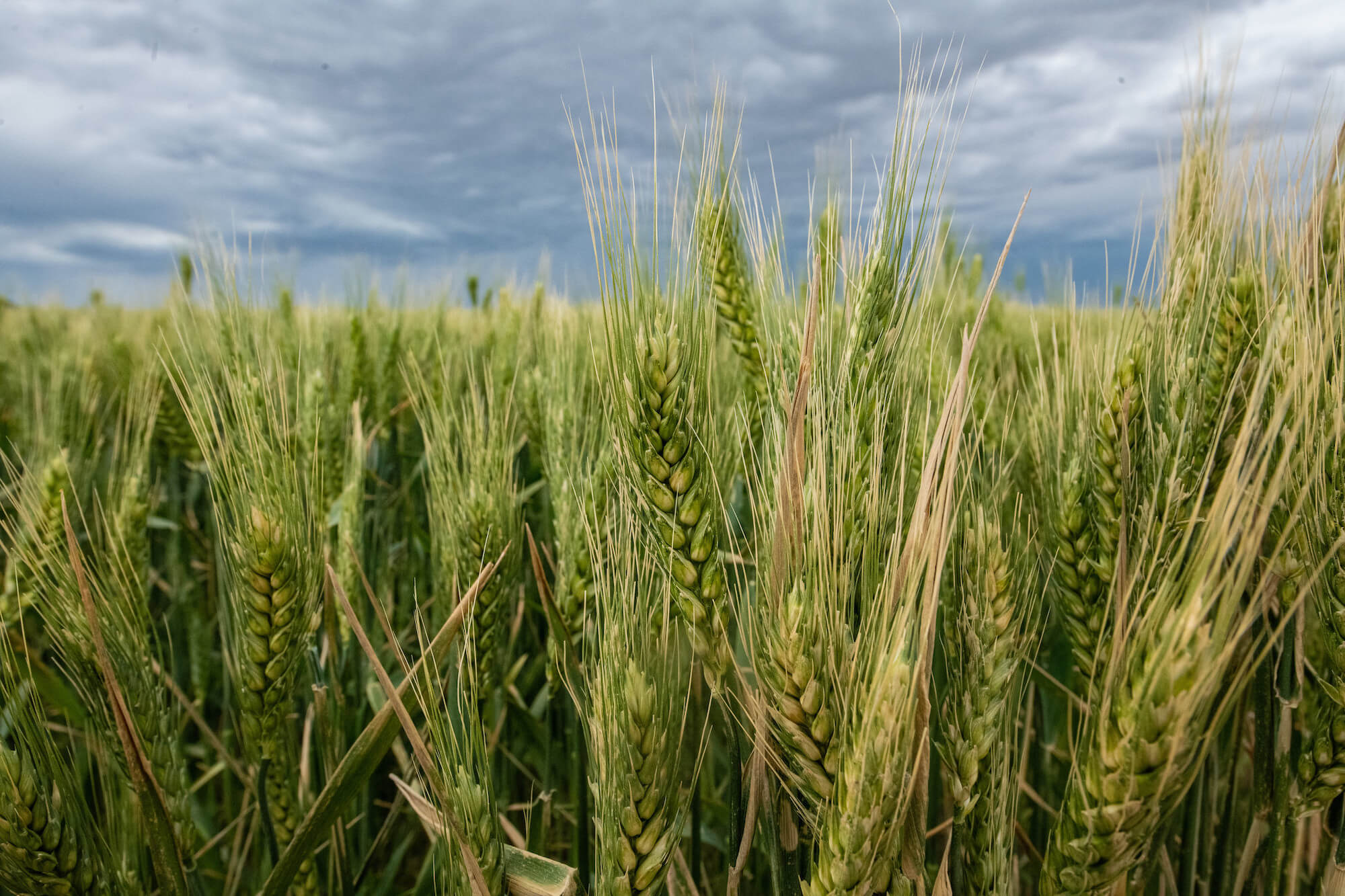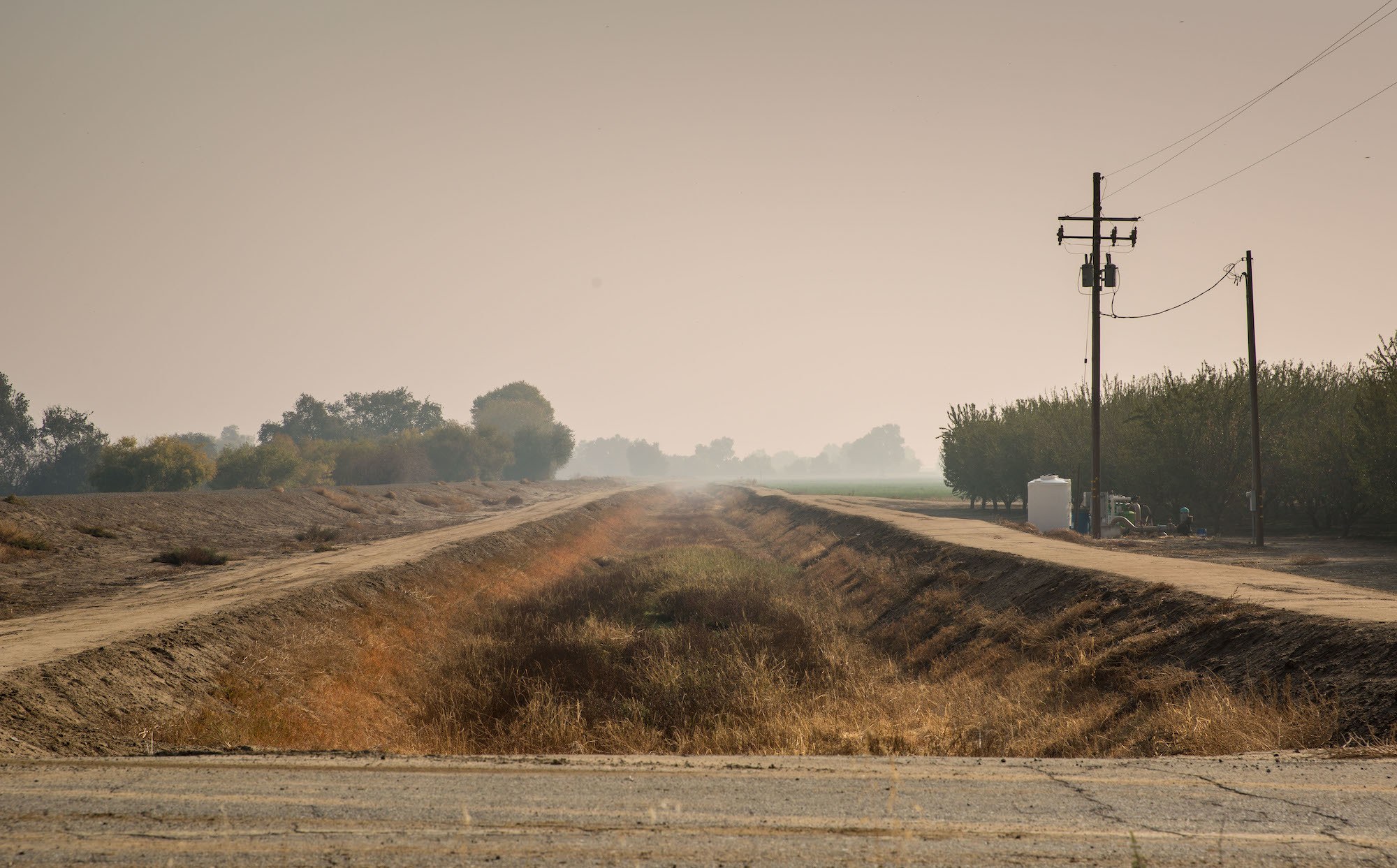
George Rose/Getty Images
Irrigation organizations play a crucial behind-the-scenes role in delivering water to farmers. But only one out of every five has an official strategy for responding to drought.
Pictured above: A dry agricultural irrigation canal along Highway 41 near Stratford, California.
In much of the West and Southwest, the climate crisis is projected to raise average temperatures while reducing snowpack for much of the foreseeable future. These trends will significantly increase the risk of drought in an area heavily dependent on irrigation for food production.
So what’s the plan? For many farming communities, there is none.
That’s according to a new report on drought preparedness published by the Department of Agriculture (USDA), which found that approximately 80 percent of irrigation organizations don’t have a formal plan for responding to future water scarcity. The finding came from a 2019 survey of irrigation organizations, which USDA defines to include the various types of entities tasked with delivering water to farms. These groups can take many forms: Some are public utilities that manage an entire community’s water supply, others include private companies contracted to maintain water and irrigation infrastructure for a group of farms. The survey—the first of its kind conducted in more than 40 years—drew responses on the subject of drought resilience from more than 2,000 respondents in the 24 states where irrigated agriculture is most common.
“Despite the broad exposure to drought risk and growing frequency of drought in response to climate change, only one-fifth of irrigation organizations have formal drought plans.”
“Despite the broad exposure to drought risk and growing frequency of drought in response to climate change,” the report authors wrote, “only one-fifth of irrigation organizations have formal drought plans.”
Drought plans outline what exactly an irrigation organization intends to do during periods of scarcity. For instance, an irrigation district might pay farmers to not farm, or it may invest in groundwater pumping, or it could buy water from neighboring regions or a private supplier. It might ration water to farmers based on their acreage, or it might cut off some producers to prioritize others, based on seniority.
The proportion of irrigation entities with a formal drought plan was higher among larger groups—which the authors defined as serving 10,000 acres of farmland or more—clocking in at 41 percent. Still, that means the majority of those entities responsible for delivering water to the biggest agricultural regions don’t yet have official guidelines on how they may curtail and divvy limited resources during periods of scarcity.
There are some important caveats to note here. For one, these numbers may have ticked upwards since 2019, particularly in response to record dry conditions in the period since. Additionally, just because an irrigation organization doesn’t have an official policy on paper doesn’t necessarily mean they’d be clueless in the face of a water shortage, said lead author Steve Wallander.
“Do they leave land fallow? Do they continue to farm? Do they farm the same crops? Do they use the same irrigation methods? [….] It’s really a complex picture.”
“Even if organizations don’t have a formal, written plan, they still have some idea about how they are likely to respond to drought,” he wrote in an email.
Still, drought resilience for producers will depend, at least in part, on their ability to foresee and prepare for disruptions like insufficient water supplies. In 2021, severe droughts across the Southwest and the West pummeled producers, some of whom saw significantly reduced yields due to water shortages, and others who decided to simply stop farming altogether and sell their high-demand water instead. In some regions, a lack of surface water led farmers to pump groundwater at such high volumes that it left many of their residential neighbors without a drinking water source. As recently as November, 28 percent of the contiguous United States was affected by severe to extreme drought, according to the National Oceanic and Atmospheric Administration.
Knowing what to expect during dry years, especially as they become more frequent, is crucial information for farms, said Sharon Megdal, director of the Water Resources Research Center at the University of Arizona, who was not involved in the study.
“It’s just being able to plan for the future and for a region in a holistic way when there’s so much uncertainty,” she said. “Individual farmers are the ones making the decisions: Do they leave land fallow? Do they continue to farm? Do they farm the same crops? Do they use the same irrigation methods? [….] It’s really a complex picture.”
“With the climate changing, it’s so hard. Things you used to be able to depend on are not showing up.”
Patterson Irrigation District, a public utility that delivers water from the San Joaquin River to more than 12,000 acres of farmland in California’s Central Valley, is one irrigation organization with a formal plan. Adopted in 2014, it outlines exactly how water would be rationed to landowners were supply to ever fall short of demand. That’s only happened twice so far, said general manager Vince Lucchesi: once in 2015, and then again in 2021. In both instances, Lucchesi said that the district was able to buy water from a neighboring district and avoid a rationing scenario, thereby meeting the water demand of local farmers “by the skin of our teeth.”
But Lucchesi also knows that option might not always be the case. “With the climate changing, it’s so hard,” he said, referring to the district’s ability to project and plan for contingencies. “Things you used to be able to depend on are not showing up.”
Even with a drought response plan in place, there’s still a lot of uncertainty to contend with, he said.
“I see the drought plan being a tool in your toolbox,” Lucchesi said. “You need to have a plan in place to address shortages for your agency. But you can’t just have a drought policy and then [maintain] the status quo. You need to be able to assess your water supply and be able to look and try to plan appropriately and make adjustments as needed.”

